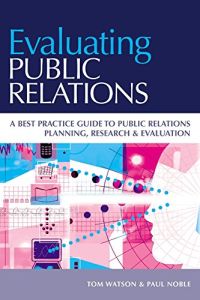Join getAbstract to access the summary!

Join getAbstract to access the summary!
Paul Noble and Tom Watson
Evaluating Public Relations
A Best Practice Guide to Public Relations Planning, Research & Evaluation
Kogan Page, 2005
What's inside?
Stop worrying that evaluating PR campaigns will inhibit your creativity, and start working from knowledge, not emotion.
Recommendation
This highly academic treatment of the theory of public relations extensively discusses the importance of evaluation. The book focuses on research about evaluating PR campaigns, including comparisons among various kinds of studies. Essentially a textbook, it goes into great detail about the specifics of research papers, their conclusions and their academic models. Authors Tom Watson and Paul Noble encourage PR practitioners to adopt a scientific framework for evaluating their work. To this end, they include checklists, case studies, flow charts, references and many bullet points, but their excellent insights and intentions do not make the book any more practical for the professional. While evaluating any business activity is a good practice (and PR professionals readily agree that it would be helpful), the reality is that very few PR firms will be able to apply this book to their hands-on, creative daily business. Because of that constraint, getAbstract recommends this investigation primarily to academics, theorists and long-range strategists.
Summary
About the Authors
Tom Watson is associate professor and head of the School of Communications at Charles Sturt University in Australia. He has more than 25 years of experience in public relations. Paul Noble is an independent trainer, consultant and academic with more than 25 years of experience in consultancy management.
















Comment on this summary